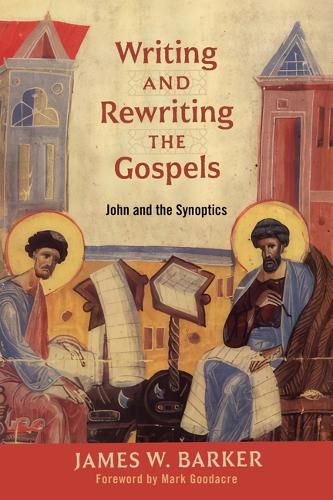Readings Newsletter
Become a Readings Member to make your shopping experience even easier.
Sign in or sign up for free!
You’re not far away from qualifying for FREE standard shipping within Australia
You’ve qualified for FREE standard shipping within Australia
The cart is loading…






A compelling reappraisal of the relationships between the canonical gospels Biblical scholars have long debated the Synoptic problem and the literary relationship between the Gospel of John and the Synoptics. During the twentieth century, the consensus shifted decisively to the Two-Source hypothesis for the Synoptic problem along with the view that John's Gospel was independent of the Synoptics. In recent decades all consensus has dissolved--yet these questions retain currency and significance.
James W. Barker takes up these questions and reappraises the evidence. Drawing on his expertise in ancient compositional practices, he makes a persuasive case for a snowballing trajectory, whereby each canonical gospel drew upon other canonical gospels. Thus, Mark was written first; Matthew draws on Mark; Luke draws on Mark and Matthew; and the last of the four, John, is dependent on all three Synoptics and was meant to be read alongside them.
This judicious and ambitious study will be of interest to New Testament scholars as well as general readers who want to know more about the literary relationships between the gospels.
$9.00 standard shipping within Australia
FREE standard shipping within Australia for orders over $100.00
Express & International shipping calculated at checkout
A compelling reappraisal of the relationships between the canonical gospels Biblical scholars have long debated the Synoptic problem and the literary relationship between the Gospel of John and the Synoptics. During the twentieth century, the consensus shifted decisively to the Two-Source hypothesis for the Synoptic problem along with the view that John's Gospel was independent of the Synoptics. In recent decades all consensus has dissolved--yet these questions retain currency and significance.
James W. Barker takes up these questions and reappraises the evidence. Drawing on his expertise in ancient compositional practices, he makes a persuasive case for a snowballing trajectory, whereby each canonical gospel drew upon other canonical gospels. Thus, Mark was written first; Matthew draws on Mark; Luke draws on Mark and Matthew; and the last of the four, John, is dependent on all three Synoptics and was meant to be read alongside them.
This judicious and ambitious study will be of interest to New Testament scholars as well as general readers who want to know more about the literary relationships between the gospels.